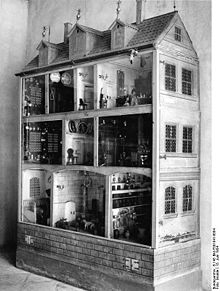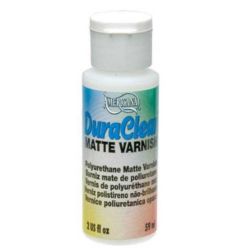*** Enter discount code SAVE10 at Checkout for savings on selected Dolls House Accessories ***
Save on Dolls House Accessories


FREE DELIVERY
When you spend £50 or more

SAME-DAY DESPATCH*
When you order before 2.00PM

COMPETITIVE PRICES
Low
Prices & Special Offers

SATISFACTION GUARANTEE
14 Day return policy

Introduction
A dolls house is a toy home which is made miniature. For
the last century, dolls houses have mainly been the domain of
children but their collection and crafting is also a hobby popular for many
adults.
Todays dolls houses trace their history back about four hundred years to the baby house display cases of Europe, which showed idealized interiors. Smaller dolls houses with more realistic exteriors appeared in Europe in the 1700s. Early dolls houses were all handmade, but following the Industrial Revolution and World War II, they were increasingly mass produced and became more standardized and affordable.
Contemporary children's play dolls houses are commonly in 1:18 (or 2/3") scale, while 1:12 (or 1") scale is common for dolls houses made for adult collectors.
The term doll house is common in the United States and Canada. In UK usage, dolls' house or dollshouse is usual.
Dolls House History
Miniature homes, furnished with domestic articles and resident
inhabitants, both people and animals, have been made for thousands
of years. The earliest known examples were found in the Egyptian
tombs of the Old Kingdom, created nearly five thousand years ago.
These wooden models of servants, furnishings, boats, livestock and
pets placed in the Pyramids almost certainly were made for religious
purposes. The earliest known European dolls houses were the baby houses from
the Sixteenth Century, which were cabinet display cases made up of
rooms. They showed idealized interiors complete with extremely
detailed furnishings and accessories. The cabinets were built with
architectural details and filled with miniature household items and
were solely the playthings of adults. They were off-limits to
children, not because of safety concerns for the child but for the
dolls house. Such cabinet houses were trophy collections owned by
the few matrons living in the cities of Holland, England and Germany
who were wealthy enough to afford them, and, fully furnished, were
worth the price of a modest full-size house's construction.
German dolls house from Nuremberg, 17th century
Smaller dolls houses such as the Tate house, with more realistic exteriors, appeared in Europe in the 1700s.
The early European dolls houses were each unique, constructed on a custom basis by individual craftsmen. With the advent of the Industrial Revolution, factories began mass producing toys, including dolls houses and miniatures suitable for furnishing them. German companies noted for their dolls houses included Christian Hacker, Moritz Gottschalk, Elastolin, and Moritz Reichel. The list of important English companies includes Siber & Fleming, Evans & Cartwright, and Lines Brothers (which became Tri-ang). By the end of the nineteenth century American dolls houses were being made in the United States by The Bliss Manufacturing Company.
Germany was the producer of the most prized dolls
houses and dolls house miniatures up until World War I. Notable German miniature
companies included Märklin, Rock and Garner and others. Their
products were not only avidly collected in Central Europe, but
regularly exported to Britain and North America. Germany's
involvement in WWI seriously impeded both production and export. New
manufacturers in other countries arose.
Living Room of dolls house. Maine, USA
The TynieToy Company of Providence, Rhode Island, made authentic replicas of American antique houses and furniture in a uniform scale beginning in about 1917. Other American companies of the early twentieth century were Roger Williams Toys, Tootsietoy, Schoenhut, and the Wisconsin Toy Co. dolls house dolls and miniatures were also produced in Japan, mostly by copying original German designs.
After World War II, dollshouses became mass produced in factories on a much larger scale with less detailed craftsmanship than ever before. By the 1950s, the typical dolls house sold commercially was made of painted sheet metal filled with plastic furniture. Such houses cost little enough that the great majority of girls from the developed western countries that were not struggling with rebuilding after World War II could own one.
The Dolls House Hobby
Dolls houses are available in different forms. From ready-made and
decorated houses to kits to custom built houses made to the
customer's design. Some design and build their own dolls house.
Simpler designs might consist of boxes stacked together and used as
rooms.
Miniature objects used for decoration inside dolls houses include furniture, interior decorations, dolls and items like books and clocks. Some of these are available ready-made, but may also be homemade.
There are dozens of miniature trade shows held throughout the year by various miniature organizations, where artisans and dealers display and sell miniatures. Often, how-to seminars and workshops are part of the show features. Miniature stores also hold classes. There are Internet forums, blogs and using other online social media concentrated in dolls houses and miniatures. Enthusiasts also share images online.
Dolls House
Construction
In the United States, most houses have an open back and a fancy
front facade, while British houses are more likely to have a hinged
front that opens to reveal the rooms.
Children's dolls houses during the 20th century have been made from a variety of materials, including metal, fibreboard, plastic, and wood. With the exception of Lundby, 2/3-scale furniture for children's dolls houses has most often been made of plastic.
Contemporary kit and fully built houses are typically made of plywood or medium-density fiberboard. Tab-and-slot kits use a thinner plywood and are held together by a system of tabs and slots (plus glue). These houses are usually light-weight and lower cost but often require siding, shingles, or other exterior treatments to look realistic. Kits made from heavier plywood or MDF are held together with nails and glue./p>
Standard Dolls House
Scales
The baby houses of the seventeenth and eighteenth centuries, and
the toy dolls houses of the nineteenth and early twentieth century
rarely had uniform scales, even for the features or contents of any
one individual house. Although a number of manufacturers made lines
of miniature toy furniture in the Nineteenth Century, these products
were not to a strict scale.
Children's play dolls houses from most of the 20th and 21st centuries are 1:18 or two third inch scale (where 1 foot is represented by 2/3 of an inch). Common brands include Lundby (Sweden), Renwal, Plasco, Marx, Petite Princess, and T. Cohn (all American) and Caroline's Home, Barton, Dol-Toi and Triang (English). A few brands use 1:16 or 3/4"-scale.
The most common standard for adult collectors is 1:12 scale, also called 1" or one inch scale (where 1 foot is represented by 1 inch.) Among adult collectors there are also smaller scales which are much more common in the United States than in Britain. 1:24 or half inch scale (1 foot is 1/2") was popular in Marx dolls houses in the 1950s but only became widely available in collectible houses after 2002, about the same time that even smaller scales became more popular, like 1:48 or quarter inch scale (1 foot is 1/4") and 1:144 or "dolls house for a dolls house" scale.
In Germany during the middle part of the 20th century 1:10 scale became popular based on the metric system. dolls houses coming out of Germany today remain closer in scale to 1:10 than 1:12.
The largest common size for dolls houses is Playscale or 1:6 which is proportionate for Barbie, Ken, Blythe and other dolls 11-12 inches tall.






